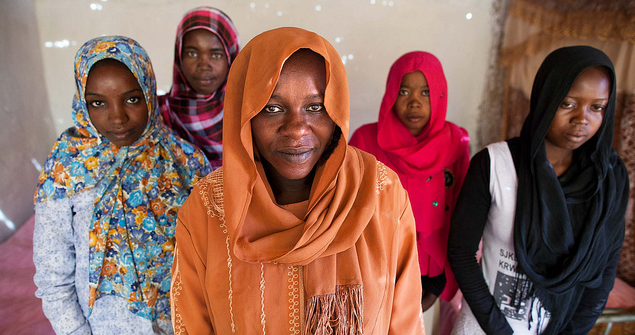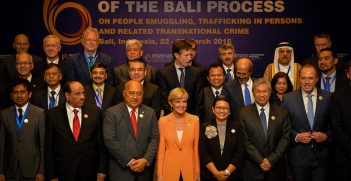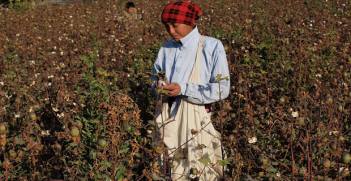Ending Forced Child Marriage Empowers the World, Not Only Women

As International Women’s Day on 8 March 2015 approaches, child marriage remains one of the greatest challenges facing female equality. Often described as “modern day slavery”, young girls are being increasingly trapped as child brides around the world. If this practice is not put to an end, an estimated 142 million child brides will exist by 2020.
One in nine girls in the developing world is forced into marriage before turning fifteen. Syrian refugees are currently facing an alarming rise of child marriage among their population in Jordan. While forced child marriage occurs across cultures and countries, it tends to rise in areas of poverty, where girls face sexual exploitation and financial instability. Their childhood is quickly replaced with the duties of a wife and mother and they are denied opportunities that contribute to their overall empowerment, such as education and employment.
The United Nations describes female empowerment as a situation in which “each woman and girl can exercise her choices, such as … getting an education, having an income and living in societies free from violence and discrimination”. Forced marriage prevents all three of these outcomes from occurring, lowering the status of women and affecting the progress of society.
Forced marriage is a barrier to children’s education, causing them to leave school or to not have any opportunity to attend at all. Almost 60 per cent of child brides in developing countries receive no formal education and in Malawi, nearly two-thirds of women without formal education are child brides. Education is a critical area of empowerment for women, without which they are kept uninformed of their rights as human beings.
By not attending school, child brides do not develop the skills and knowledge that lead to employment. Instead they are trapped in a cycle of poverty. In countries with high rates of child marriage, such as Bangladesh, Malawi, Mozambique and Niger, more than 75 per cent of people are living on less than $2 a day. Women represent half of the world’s workforce; lowering girls’ economic empowerment by preventing them from employment and participation in the economic development of their communities in turn decreases the prosperity of the country.
A major health risk for girls in forced marriages is the early and forced continuation of pregnancies. Brides as young as 12 and 13 are forced to bear children, even though their bodies are not yet fully physically and sexually developed. These girls are five times more likely to die in childbirth than a woman in her early twenties. Their children also face health issues, such as the increased risk of infant mortality and stillbirth. Forced child marriage influences the health of future generations.
Tragically, many girls endure forced sexual initiation as child brides, putting them at greater risk of sexually transmitted diseases. According to Girls Not Brides, forced child marriage in Kenya and Zambia increases the chance of contracting HIV by 75 per cent among young girls. Studies show sexual initiation and pregnancy also have a significant impact on mental health, with child brides displaying a 40 per cent increase of mental health disorders.
Forced child marriage not only lowers the status of women locally but also has worldwide effects. Child marriage has slowed down the progress of the UN’s Millennium Development Goals, with international organisations claiming that global poverty will not be reduced until child marriage ends. They are now calling on the UN to strategically address child, early and forced marriage in the post-2015 development framework.
While forced marriage is prohibited in international law and national human rights instruments, several states fail to enforce or implement them. In Yemen, a bill concerning the minimum age for marriage remains a draft and thousands of girls are married off as children, some as young as ten years old. In Ethiopia, the Ministry of Justice exercises the power to authorise marriages before the age of 18. And although a legal age is set in Angola, girls can marry earlier if given parental consent. Implementing a set minimum age for marriage is a step towards protecting the rights of young girls, but it is not enough to end the complex issue of forced marriage.
Instead a cultural shift is required to transform the many influencing factors of child marriage, such as gender roles, cultural values and societal norms. Informing others of forced child marriage and inspiring a collective effort to end it will ensure long-term, sustainable change. Effective starting points are joining an online campaign to strengthen the voice against child marriage, sharing resources with others to raise awareness and engaging in a conversation about how ending forced marriage contributes to the empowerment of the world at large.
In the words of Girls Not Brides, “when girls are allowed to be girls, everybody wins”.
Courtney Pelkowitz is currently studying a Master of International Relations at the University of Western Australia. This article can be republished with attribution under a Creative Commons Licence.





